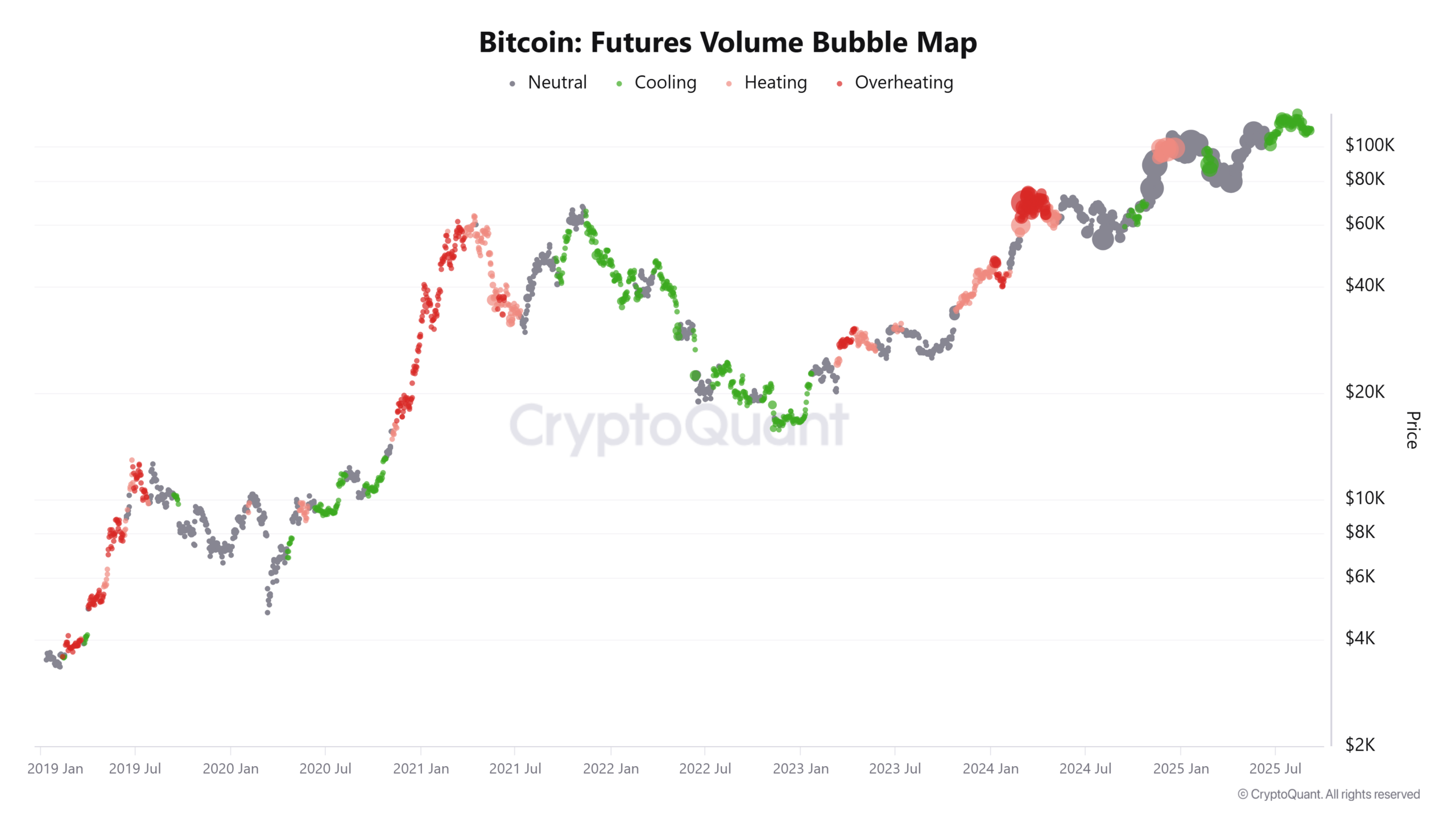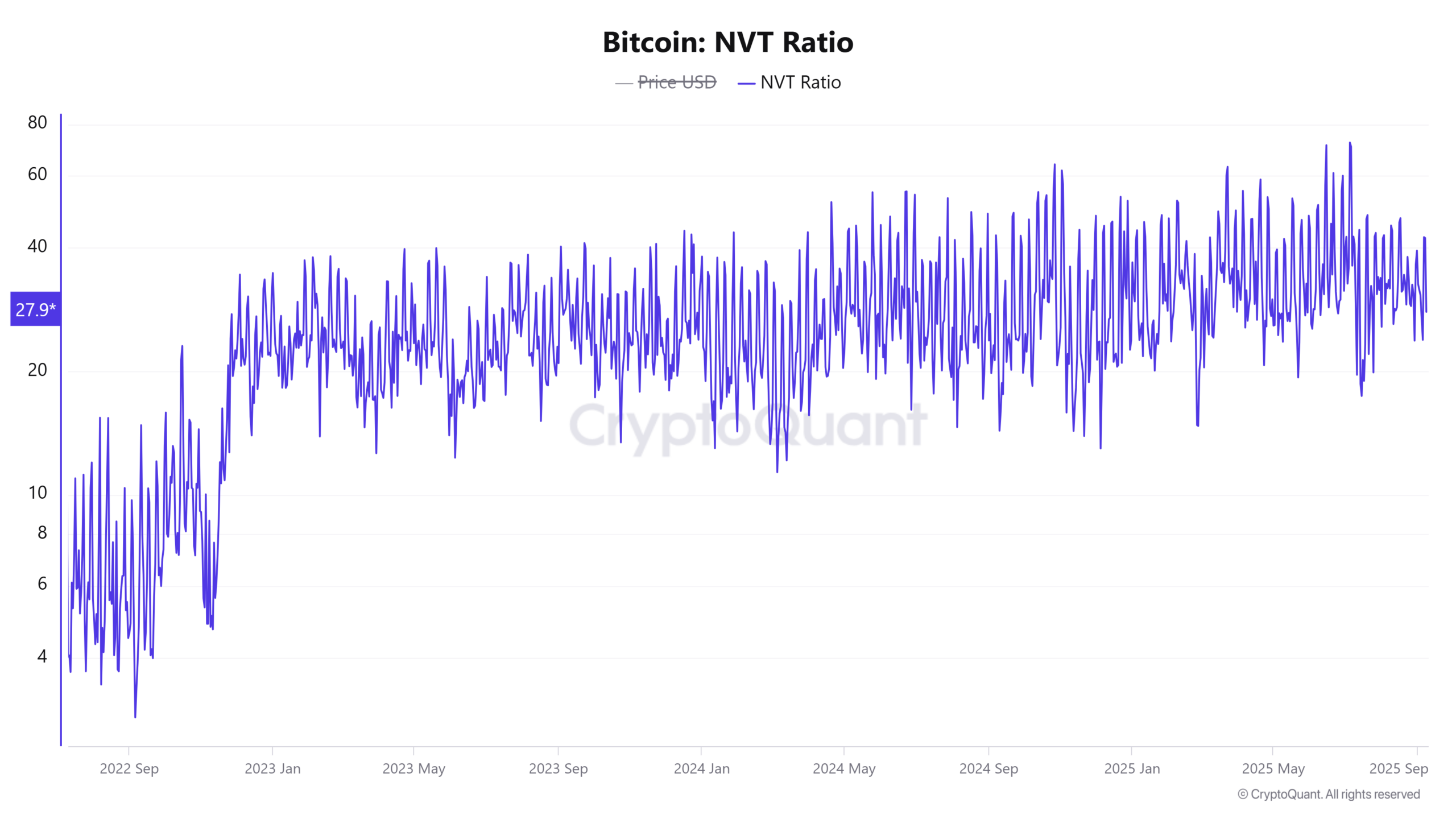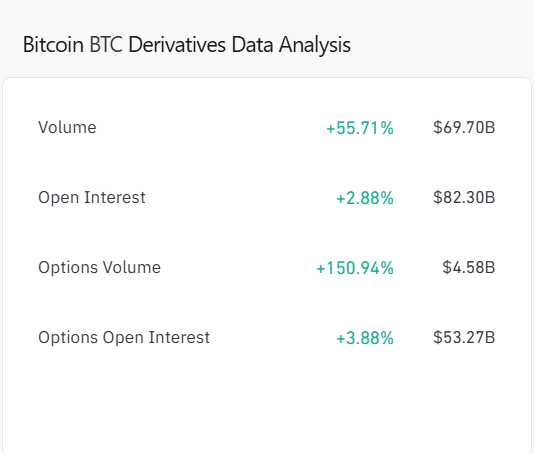Bitcoin’s next breakout is likely to be driven by ETF flows combined with surging derivatives activity: BlackRock’s ETF dominance concentrates liquidity while rising options volume amplifies directional risk, with lower NVT and cooling futures suggesting healthier valuations but heightened short-term volatility.
-
BlackRock’s IBIT controls ~58% of BTC ETF holdings, concentrating institutional flows.
-
Derivatives activity (options + futures) surged, signaling growing speculative positioning and hedging demand.
-
NVT down 34% to 27.93, implying improved on-chain valuation health despite concentrated ETF ownership.
Meta description: Bitcoin ETFs dominate flows as derivatives spike; analyze ETF influence, NVT, and futures to spot the next breakout. Read expert takeaways now.
What is driving Bitcoin’s next breakout?
Bitcoin ETFs and derivatives activity are the primary drivers shaping the next breakout. ETF concentration—led by BlackRock’s IBIT—creates directional liquidity, while spikes in options and futures amplify volatility and hedging flows, making institutional positioning the key short-term determinant.
How do ETF flows and derivatives interact?
ETF inflows supply spot liquidity, often translating to buying pressure on BTC. Derivatives—futures and options—enable leverage and hedging, which can magnify moves created by ETF demand. When ETFs dominate flows, derivatives positioners may front-run or hedge, increasing short-term volatility.
Key Takeaways
BlackRock’s ETF dominance with a Derivatives surge shows institutions and speculators aligned, while cooling Futures and a falling NVT ratio suggest healthier conditions for a potential breakout.
BlackRock’s IBIT ETF now commands the Bitcoin [BTC] ETF landscape with 751,283 BTC, representing nearly 58% of all holdings.
Fidelity trails with 200,956 BTC, showing a wide gap that highlights BlackRock’s dominance. At press time, Bitcoin traded at $112,960, up 1.01% daily while consolidating near a critical level.
Having said that, this concentration raised concerns that Bitcoin’s next directional move may depend more on BlackRock’s flows than broader market forces. Institutional positioning stayed the key driver.
Are cooling Futures a warning for Bitcoin traders?
Futures volume appears to be cooling, indicating reduced speculative demand in leveraged markets. This shift suggests retail and short-term speculators are pausing after earlier higher activity.
Declining futures activity often signals hesitation to take aggressive leveraged positions, particularly when ETFs dominate headlines. Traders may recalibrate risk exposure ahead of potential volatility.

Source: CryptoQuant (data referenced as plain text)
Does NVT ratio point to healthier valuations?
Bitcoin’s Network Value to Transaction (NVT) Ratio dropped about 34% to 27.93, indicating that on-chain transaction value rose relative to market cap. Lower NVT is typically interpreted as improved valuation health.
While a declining NVT can reduce the case for extreme overvaluation, it does not eliminate risk. Traders should combine NVT with liquidity metrics and ETF flow analysis to validate sustainability.

Source: CryptoQuant (data referenced as plain text)
Why are Bitcoin Derivatives flashing speculative interest?
Derivatives markets showed robust activity: total derivatives volume rose roughly 69.54% to $73.59 billion, with Open Interest up 3.6% to $82.29 billion. This denotes steady positioning across exchanges.
Options led the surge: Options volume jumped about 170.85% to $4.48 billion, and Options Open Interest increased 4.03% to $53.23 billion. Options growth often signals aggressive hedging and speculative strategies.

Source: CoinGlass (data referenced as plain text)
Can Bitcoin rely on ETFs or derivatives for its next breakout?
BlackRock’s commanding ETF share increases the likelihood that ETF flows will steer short-term price direction. Cooling futures suggest reduced retail levered aggression, while options growth points to amplified directional bets.
Combining these signals, Bitcoin’s breakout potential depends on sustained ETF purchases alongside derivatives positioning. Traders should monitor ETF flow data, options skew, and NVT trends to gauge conviction.
Frequently Asked Questions
How much of Bitcoin ETF supply does BlackRock hold?
BlackRock’s IBIT holds roughly 751,283 BTC, estimated at about 58% of disclosed ETF holdings, establishing a dominant institutional position relative to peers like Fidelity.
What does a falling NVT ratio mean for traders?
A falling NVT ratio generally indicates improved network utility relative to market cap, suggesting more grounded valuations; traders should still cross-check liquidity and derivatives positioning.
Key Takeaways
- ETF concentration: BlackRock’s IBIT controls the majority of ETF-held BTC, concentrating market influence.
- Derivatives surge: Options and futures activity rose sharply, signaling speculative positioning and hedging needs.
- Action items: Monitor ETF flows, options skew, futures OI, and NVT for a composite view before taking positions.
Conclusion
Bitcoin ETFs and derivatives together are shaping the conditions for a potential breakout. While a lower NVT ratio suggests healthier valuations, ETF concentration and rising options activity increase the chance of amplified moves. Traders should prioritize multi-signal confirmation and risk management as ETF flows and derivatives set the next directional tone.
